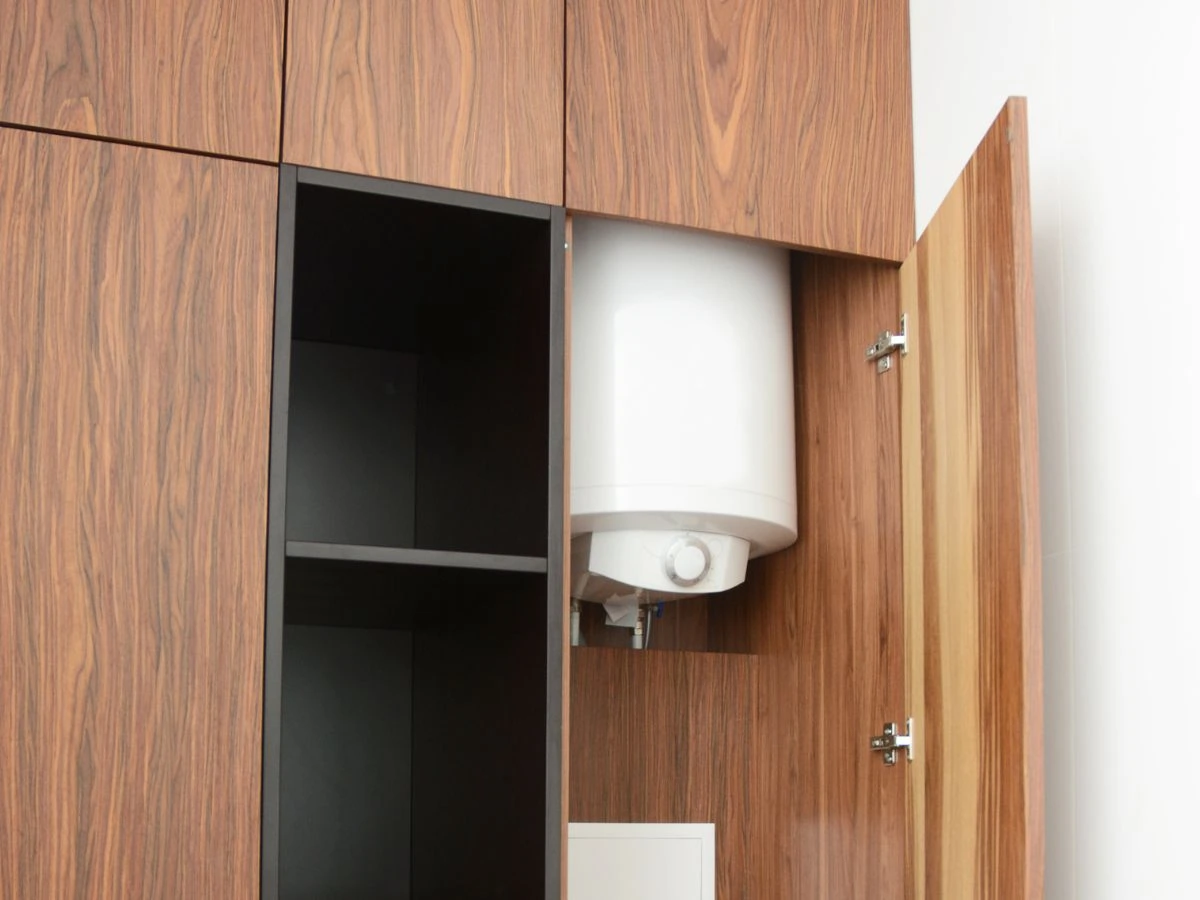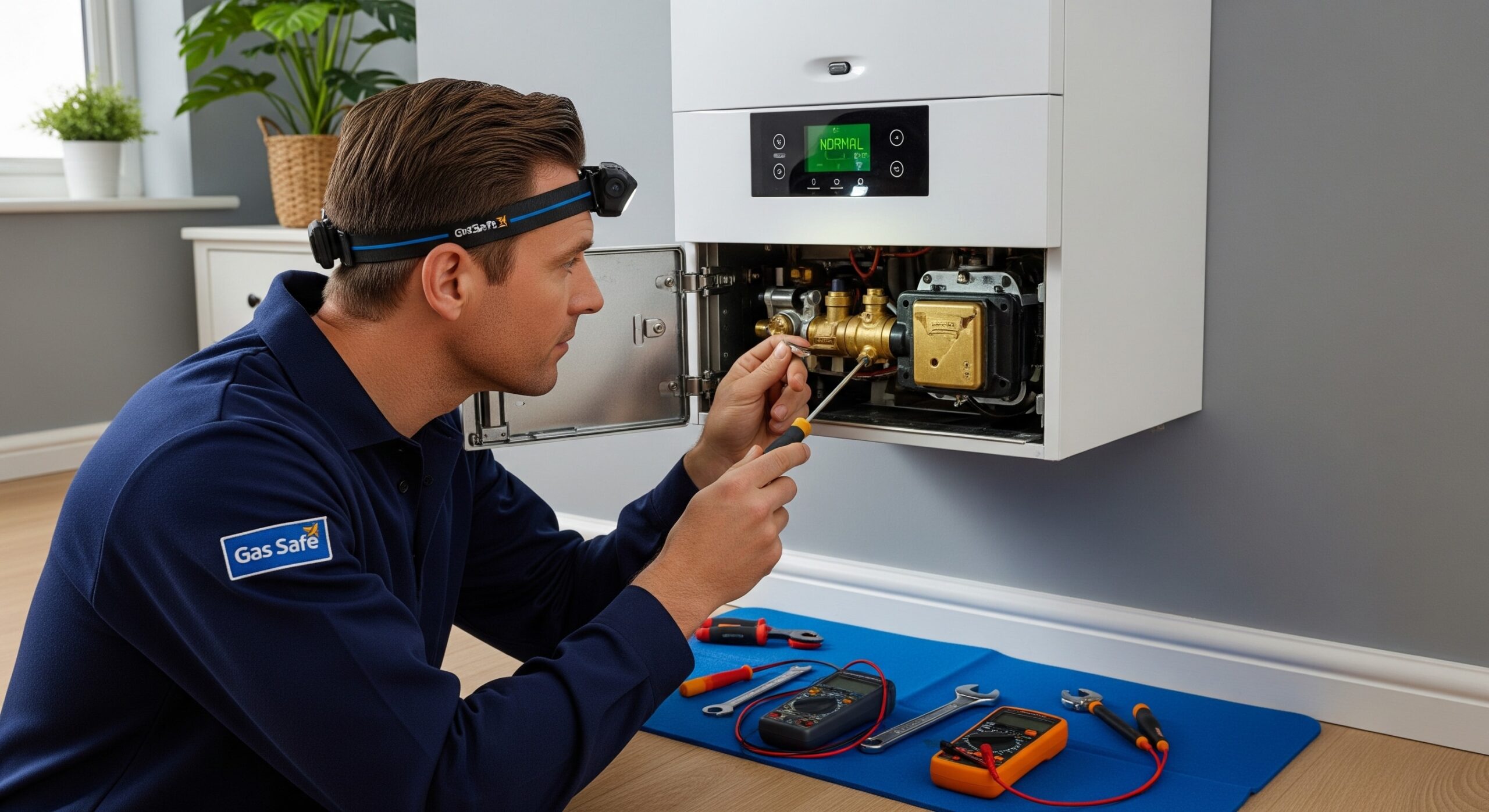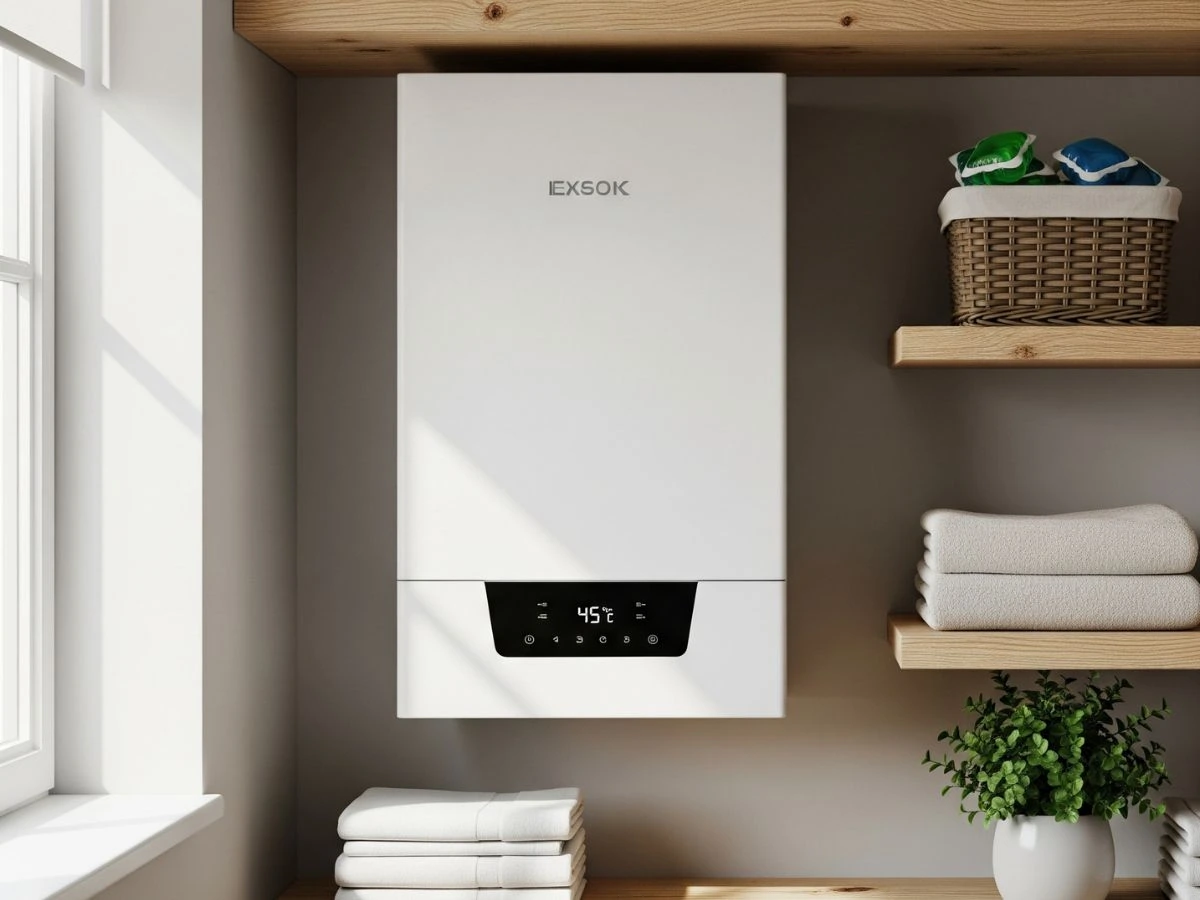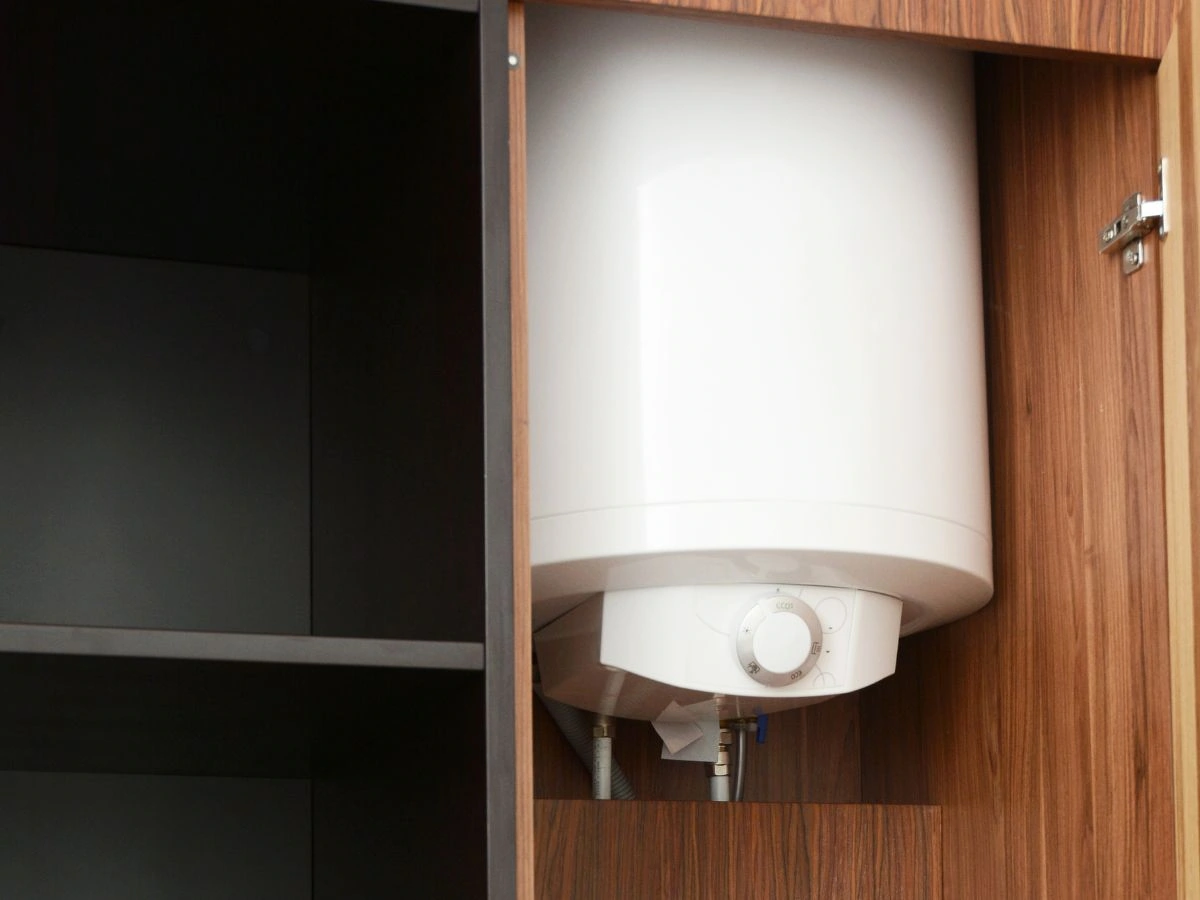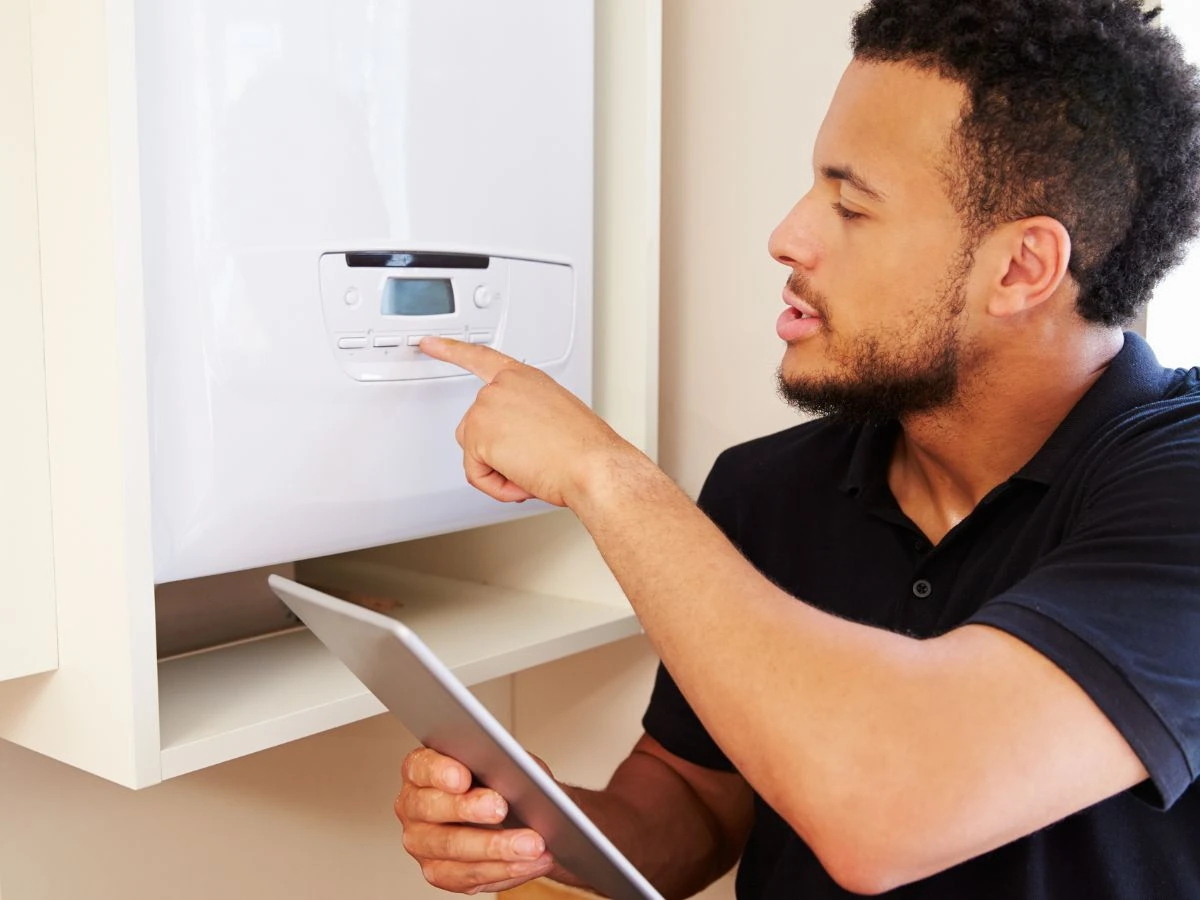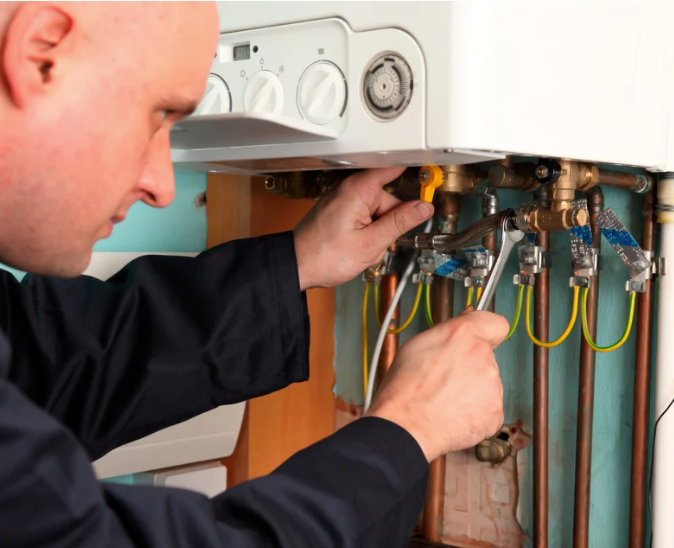Your boiler might be the heart of your home’s heating system, but let’s face it – it’s not exactly a piece of art. Whether you have a modern combi boiler or an older conventional unit, the desire to conceal this essential but unsightly appliance is understandable, but doing so requires careful consideration of safety requirements and regulations. This guide will walk you through the essential aspects of covering your boiler safely and stylishly, ensuring you maintain both functionality and aesthetics without compromising on safety standards.
Understanding Boiler Safety
When it comes to covering your boiler, safety should always be your primary concern. Proper ventilation is crucial – your boiler unit needs adequate airflow to function efficiently and safely. The UK Gas Safe regulations require specific clearance spaces around boilers: typically, at least 600mm at the front for maintenance access and varying distances at the sides and top depending on your boiler model.
Materials used for boiler covers must be heat-resistant and non-flammable. Avoid using materials like MDF or standard wood, which can warp or pose fire risks when exposed to constant heat. Instead, opt for materials rated for high-temperature environments.
UK compliance standards also dictate that any boiler cover must be easily removable for maintenance and emergency access. Following these safety guidelines is essential, as permanent structures or heavy, fixed covers are not suitable options.
Common Combi Boiler Mistakes to Avoid
Many homeowners make the mistake of completely enclosing their boiler without leaving enough room for proper ventilation and safe operation. Another frequent error is using decorative fabrics or combustible materials near the boiler. Remember, aesthetics should never compromise safety. Also, avoid DIY solutions that block access to boiler pipes, control panels or emergency shut-off points.
DIY vs. Professional Help
While DIY boiler covers can be tempting, consider your skill level and the complexity of the project. DIY advantages include cost savings and customisation options, but risks include improper installation affecting boiler performance.
Professional installation ensures compliance with safety regulations for boilers and often includes expert advice on materials and design. While more expensive, it provides peace of mind and potentially better results.
DIY Checklist:
- Measure clearance requirements
- Choose appropriate materials
- Plan for adequate ventilation
- Ensure easy access for maintenance
- Verify compliance with local regulations
Step-by-Step Guide to Covering Your Boiler
Here are the step-by-step guid to covering your boiler:
1. Gather Necessary Tools and Materials
- Heat-resistant materials
- Ventilation grilles
- Appropriate fixings
- Measuring tape
- Safety equipment
2. Measure Carefully
- Account for required clearances
- Include space for pipes and connections
- Plan access points for controls and maintenance
3. Create the Framework
- Install support brackets if needed
- Ensure the structure is stable
- Incorporate ventilation points
4. Add Panels and Doors
- Install heat-resistant panels
- Attach hinges and handles
- Test access and movement
Conducting Final Safety Inspections
Before considering your project complete, conduct thorough safety checks to verify all clearances meet manufacturer specifications. Test the effectiveness of your ventilation system and ensure that access to all controls remains unobstructed. These final inspections are critical for both safety and compliance with regulations.
Creative Boiler Cover Ideas
There are numerous ways to conceal your boiler while maintaining safety standards. Consider slatted cabinet doors that allow airflow while providing a modern look. Metal mesh panels can offer both ventilation and style. For a contemporary approach, perforated metal sheets in powder-coated finishes combine functionality with aesthetics.
Custom-built cabinets with proper ventilation grilles can be designed to match your existing décor. Some innovative solutions include fold-away doors or sliding panels that provide full access when needed while maintaining a sleek appearance when closed. Installing a dedicated cover is often a good idea for boilers located in utility rooms or other visible areas where aesthetics matter.
Boiler Cupboards: Purpose-Built Solutions
Boiler cupboards represent one of the most effective and popular solutions for concealing boilers while maintaining all necessary safety and accessibility requirements. These purpose-built enclosures are specifically designed to house heating equipment, providing an ideal balance between concealment, functionality, and compliance with building regulations.
Modern boiler cupboards are engineered with integrated ventilation systems that ensure optimal airflow around the appliance. They typically feature adjustable shelving to accommodate pipework and controls, while providing additional storage space for heating system components and household items. The doors are designed for easy removal or wide opening to facilitate maintenance access.
When selecting or designing a boiler cupboard, consider factors such as internal dimensions, ventilation requirements, and access arrangements. Many manufacturers offer modular systems that can be customised to fit specific spaces and boiler configurations. These systems often include features like removable panels, integrated lighting, and cable management solutions.
Professional installation of boiler cupboards ensures compliance with Gas Safe regulations and building standards. The cupboard must be properly ventilated, with adequate clearances maintained around the boiler and easy access to all controls and service points. Quality boiler cupboards are constructed from fire-resistant materials and designed to withstand the thermal cycling associated with boiler operation.
Kitchen Integration and Proper Placement
Kitchen installations present unique challenges and opportunities for boiler cupboard placement, requiring careful consideration of both practical and aesthetic factors. The kitchen environment demands seamless integration with existing cabinetry while maintaining strict safety standards and ensuring the boiler doesn’t interfere with cooking activities or food storage areas.
Proper placement in kitchens involves positioning the boiler cupboard away from direct heat sources such as ovens, hobs, and dishwashers. The cupboard should be located where it won’t obstruct workflow patterns or create accessibility issues during meal preparation. Many successful installations utilise corner positions or integrate the boiler cupboard into a run of tall units, maintaining the kitchen’s visual continuity.
Ventilation considerations become particularly critical in kitchen environments due to existing heat sources and humidity levels. The boiler cupboard must have dedicated ventilation that doesn’t interfere with kitchen extraction systems or create condensation problems. Professional assessment ensures the combined heat load from cooking appliances and the boiler doesn’t exceed safe levels for the space.
Conclusion
Covering your boiler can significantly improve your home’s aesthetics, but safety must always come first as the risk of carbon monoxide poisoning can be high, especially in the bedroom. Whether you choose a DIY approach or professional installation, ensure proper ventilation, use appropriate materials, and maintain easy access for maintenance.
If you want professional advice on how to hide your boiler in a bathroom renovation or new kitchen design, consider booking your annual boiler service with Premier Gas and ask as many questions as you like. We can help you strike the perfect balance of style and safety. From expert advice to professional solutions, Our team of professional heating engineers ensures your heating system remains safe, efficient, and discreetly stylish. Contact us today to book your service or get expert guidance on boiler installation and covers.


